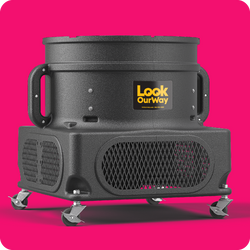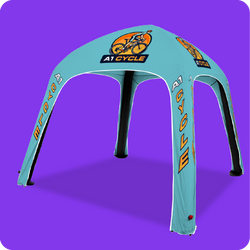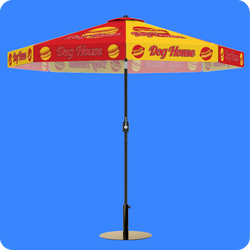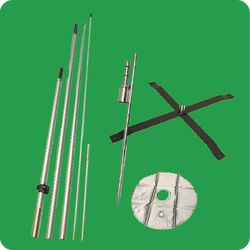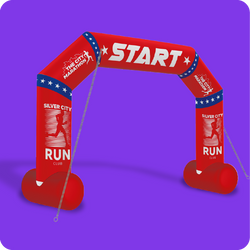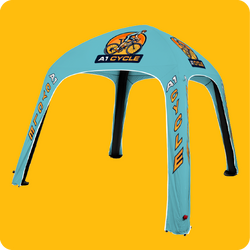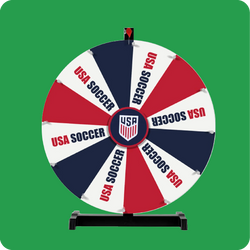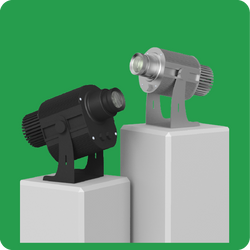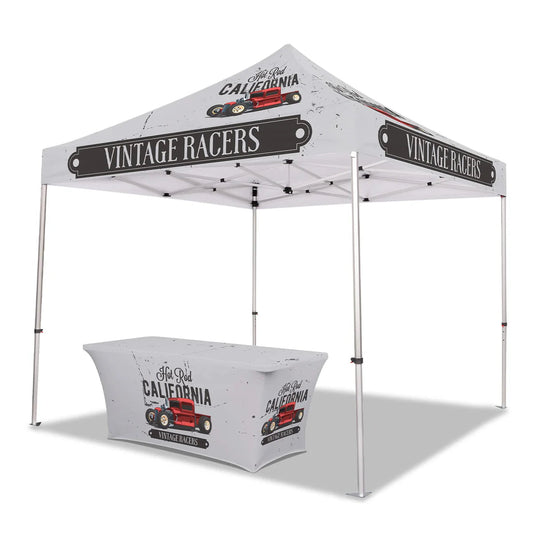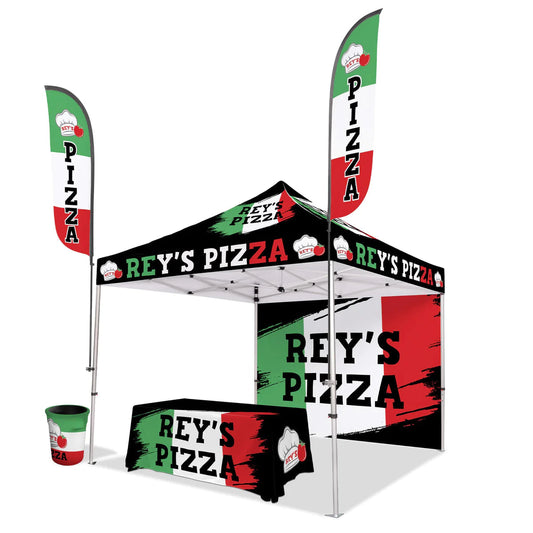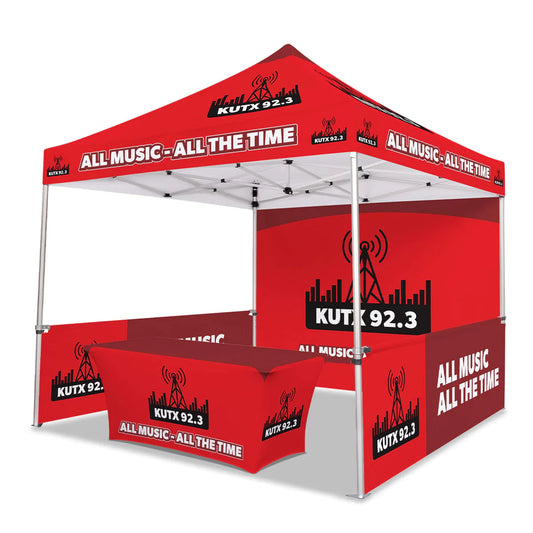What’s the Best Canopy Tent for Wind?
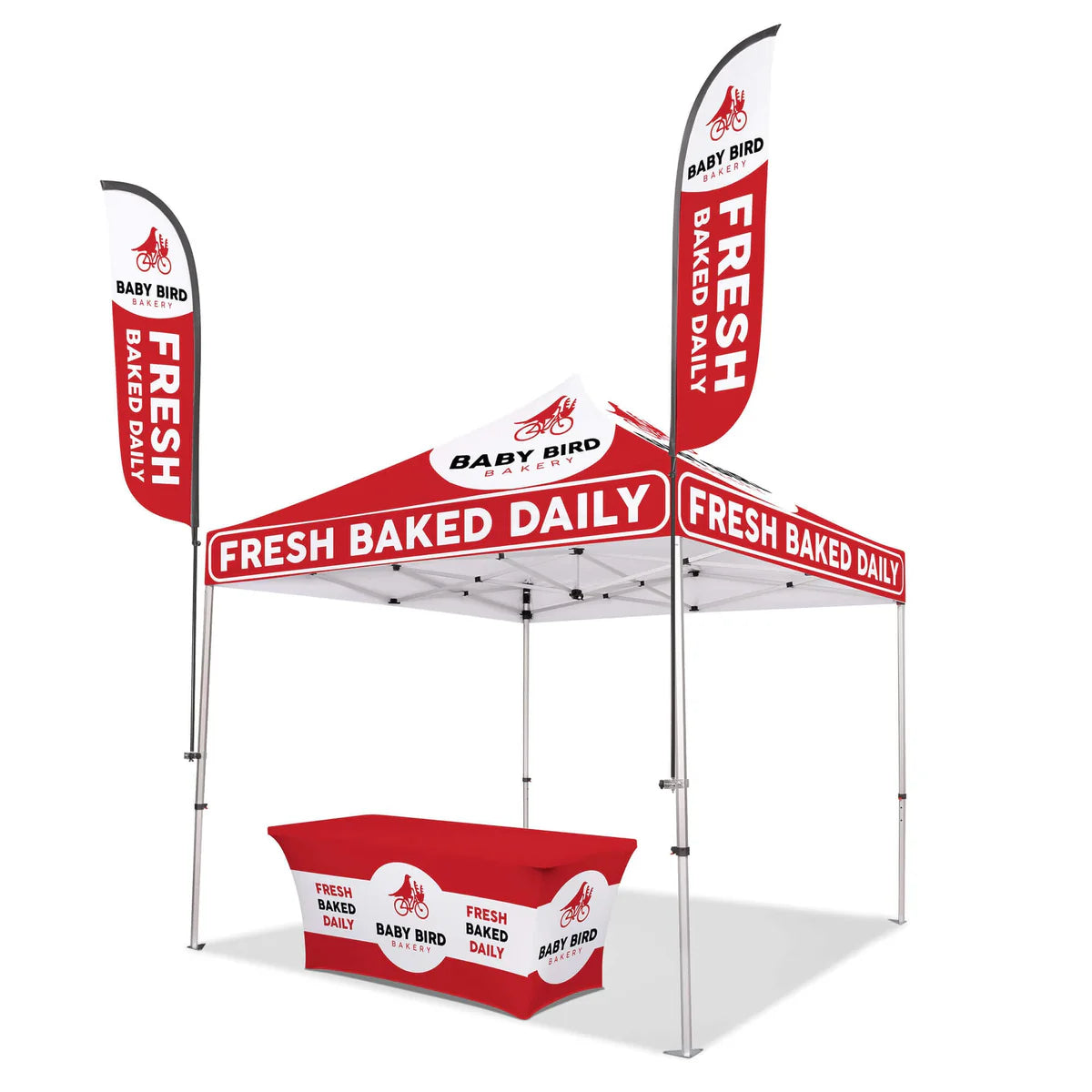
What's the Best Canopy Tent for Wind?
How to Choose a Wind-Resistant Tent for Your Next Event
Have you ever stood at an event gripping your canopy tent while the wind howled, wishing you had a more wind-resistant shelter? It doesn't matter if it's a trade convention, state fair, or concert event—the right canopy tent can make or break your outdoor event in windy conditions.
In this guide, you'll learn the essentials of choosing the best canopy tent for wind—because the last thing you need is to chase your tent down the beach or through a parking lot.
We'll cover what features to look for in a wind-resistant canopy tent, from heavy-duty frames to sidewalls that cut the breeze. Plus, we'll explore easy setup options and how to secure your tent against gusts.
How to Shop for the Most Wind-Resistant Canopy Tents
When you're in the market for a new canopy tent (especially one to stand strong against the wind), there are key features you want to keep an eye out for—
Heavy-Duty Frames
Look for a canopy tent with a heavy-duty steel frame. Steel provides extra weight and stability, making it less likely to move in windy conditions.
Wind Vents
A tent with wind vents at the top allows air to flow through, reducing the chance of your tent turning into a makeshift kite. These vents help manage the air pressure and can significantly improve wind resistance.
Sidewalls
Incorporating sidewalls can offer extra protection and stability against sidewinds. Opt for sidewalls that are easy to attach and remove, giving you flexibility with your wind protection.
Tight Weave Fabric
The canopy material matters. Look for a high-quality tight weave fabric like Oxford polyester that is wind-resistant, water-resistant, and UV-protected or with a UPF of 50+.
Anchoring System
Don't overlook the importance of a sturdy anchoring system. Some canopy tents come with specialized stakes or guy lines designed for windy conditions, providing extra security.
How Can I Make My Canopy Tent More Effective at Handling Wind?
Increase Weights
The first and perhaps most straightforward method is to add more weight. Weight bags, sandbags, or even DIY solutions like filling old milk jugs with sand or water can serve as effective anchors. Securely attach these weights to each tent leg to significantly improve stability.
Secure with Guy Lines
Attach guy lines to the top corners of your tent and anchor them to the ground with heavy-duty stakes far away from the tent. This creates tension that helps hold the tent in place, distributing the wind force more evenly.
Use Windbreaks
If you're at a location where you can use natural or artificial windbreaks, do so. Setting up near a building, a vehicle, or even temporary fencing can significantly reduce wind speed before it hits your tent.
Check the Setup Surface
Secure your tent on the most stable surface available. Grass and soil offer better anchoring options for stakes than asphalt or concrete. If you're setting up on a hard surface, ensure your weights are heavy and secure enough to compensate for the lack of stakes.
Upgrade to Heavy-Duty Stakes
Standard tent stakes might not cut it in windy conditions. Invest in heavy-duty long stakes designed for anchoring in challenging environments. The longer and sturdier the stake, the better it will anchor your sunshade.
Add Sidewalls Carefully
Sidewalls can offer extra protection and stability against wind, but use them wisely. In moderate winds, they can block wind effectively. However, consider removing them in high winds to prevent your tent from catching wind like a sail.
Regular Maintenance
Check your heavy-duty canopy tent for any wear and tear regularly. Reinforce or replace weak spots, especially before an event where wind might be an issue.
Frequently Asked Questions about How Canopy Tents Handle Wind
How Much Wind Can a Pop-up Canopy Take?
The wind tolerance of a heavy-duty pop-up canopy tent largely depends on its design, material, and how well it's secured. Generally, a high-quality pop-up canopy can withstand winds up to 20 to 30 mph when properly anchored with weights, stakes, and guy lines. However, always consult the manufacturer's recommendations to be sure.
Can I Leave My Canopy Tent Up Overnight?
Leaving your instant canopy tent up overnight is possible but comes with risks, especially if unexpected high winds or storms roll in. If you must leave it up, ensure it's securely anchored and check the weather forecast. Removing the canopy fabric from the frame can also reduce the risk of damage in windy conditions.
What Is the Best Canopy for High Winds?
The best pop-up canopy for strong winds typically features a heavy-duty steel frame, a vented top, and is made from high-quality wind-resistant material. A 10x10 canopy tent can shield against high winds and offer 100 square feet of shade.
How Do I Stop My Canopy Tent from Flapping in the Wind?
To prevent your canopy from flapping, ensure the fabric is taut and securely fastened to the frame. Side walls and awnings can help block wind, but ensure they're attached snugly. Also, employing weight bags and adjusting the tension on guy lines can minimize flapping.
What Maintenance Does My Canopy Tent Need to Remain Wind Resistant?
Check for any tears or weak spots in the fabric that could worsen in the wind. Inspect the frame for corrosion or damage and replace any worn parts. Keeping the canopy clean and dry before storing it can also extend its life and performance.
Can I Repair a Torn Canopy Tent Fabric?
Yes, torn canopy tent fabric can often be repaired with a patch kit designed for the specific material of your tent. For small tears, waterproof, tear-resistant tape can provide a quick fix.
Are There Canopy Tents Specifically Designed for Beaches?
Yes, there are canopy tents features designed with the beach events in mind. These lightweight tents feature roller bags or carry bags for easy transport, sandbags for anchoring, and UV-protected materials for sun protection. Look for "beach canopy" or "beach tent" models from reputable brands, often featuring vented tops for better wind resistance.
Do You Need Assistance Choosing a Wind-Resistant Canopy Tent?
With the right information and a bit of guidance, you can confidently choose a tent that stands strong against the wind, ensuring your event goes off without a hitch, regardless of the weather.
The best outdoor canopy tent should meet your space and style requirements. It should also offer peace of mind through sturdy, wind-resistant, durable materials and easy setup options.
Are you planning a beach wedding or setting up a booth at a local farmers market? Even better, a camping trip with family and friends? The right canopy tent can make all the difference. Check out our custom canopy tents today!



